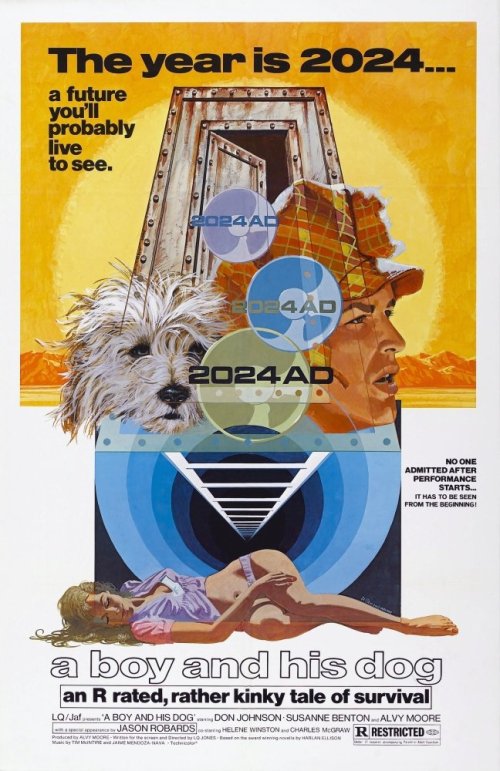
By Richard Winters
My Rating: 0 out of 10
4-Word Review: Journalist investigates pirate hideout.
Blair (Michael Caine) is a newspaper reporter who becomes intrigued about the reports of missing boats in the Caribbean. He gets the permission from his editor to travel down there to investigate and he takes along his 12-year-old son Justin (Jeffrey Frank). The trip proves dangerous right from the beginning when the plane they’re traveling in crashes on one of the islands when the wheels of the craft fail to operate as its trying to land. They then go on a fishing trip only to be attacked by some pirates living on an uncharted island. Justin is brainwashed by the head of the group, Nau (David Warner), to become heir while Blair is put to the task of being the resident scribe and in the process becomes the source of romantic affection to Beth (Angela Punch McGregor) whose husband he killed earlier during the attack on their fishing boat. While Blair desperately searches for an escape he becomes even more worried about his son who no longer shows any loyalty to his father and instead considers himself a descendant of the pirates.
This was another one of Caine’s ‘paycheck projects’ where he’d do the film simply on the basis of the monetary offer regardless of the script quality. He has since regretted this decision and refuses to talk about it in any of his interviews while privately labeling it the worst film of his career. The script was written by Peter Benchley and based off of his novel of the same name. Since Benchley also wrote Jaws he was for awhile deemed a hot commodity in Hollywood, but after this movie tanked his status diminished completely and he was never offered another script deal again though his 1991 novel ‘Beast’ did get adapted into a TV-movie.
The main problem is the disjointed tone that comes off at times as a thriller and at other moments a comedy. The scenes of violence, which start out right away, are completely botched. The first one has what’s clearly a mannequin put in place as the victim and thus makes the stabbing sequence unintentionally laughable. The second violent episode where the pirates raid another boat has the victims not making a single sound as they’re being hacked and thus allowing their daughter to sleep through it, but I feel men and women will definitely yell out in terror as their fighting for their lives. The third raid features one of the victims trying to take on the pirates, one-by-one, karate style, but this turns the thing into a farce and makes the pirates engaging in a weird sort of way, which saps away all the suspense.
The concept that this pirate community would be inhabiting an uncharted island for centuries and not found out is unbelievable to the extreme. They come-off like people lost in a time warp who are confused and baffled by modern technology, but they’re clearly able to get off the island whenever they want, so why wouldn’t they travel to other islands, or even the mainland where they would come into contact with the modern day civilization? Even if the whole group didn’t go there would most likely be a few who’d be curious enough to want to explore what else was out there. Having the pirates get into a time machine from the 1600’s to the modern day, or be the ghosts of pirates from long ago, as wacky as those concepts may be, would still be better than doing it the way it gets done here.
The Caine character is boring and the way he gets put on this assignment is ridiculous as his boss just tells him ‘to go’, without putting up any provisions like how long he’ll be staying, where exactly will he be traveling to, how many articles would he be writing and when would they be due, or even whether the newspaper would even be compensating him for the cost. With terms this loose a person could frolic away on some tropical vacation and his employers wouldn’t have known the difference. He’s also never shown writing anything on a notepad, or typewriter, or dictating into a tape recorder, so it barely seems like he’s a journalist at all. The idea that Caine would be the only person on the planet intrigued by these disappearances is absurd too as relatives of the victims would be demanding answers and there would be other news reporters wanting to travel there in an effort to be the first to get the ‘big scoop’.
It’s also odd that a father would choose to take his son on such a dangerous mission knowing full well that others who have traveled to this area have disappeared without a trace making it seem like he’s an irresponsible parent. The kid also gets ‘brainwashed’ too quickly, literally overnight, making it seem like he might have some sort of mental disorder if he’s able to change personalities and allegiance that fast. The idea of putting match sticks in his eye sockets and thus not allowing him to sleep would most likely dry his eyes out and blind him instead of getting him to come onto their side and like them. The pirates are also able to do the same ‘brainwashing’ with another young girl they kidnap, but how is this primitive group so adept at child psychology in ways that modern man isn’t?
Spoiler Alert!
The ending, which features Caine annihilating the entire group via a M2 machine gun is cool though it should’ve been done in slow motion to fully accentuate the violent depravity. The subsequent chase through the dark bowels of the ship between Caine and his son and Nau where you hear the creepy splashing of the sea water hitting against the ship’s bottom isn’t bad either. Unfortunately everything that comes before is a wretched mess making it by all accounts one of the worst and most inane films I’ve ever seen.
My Rating: 0 out of 10
Released: June 13, 1980
Runtime: 1 Hour 54 Minutes
Rated R
Director: Michael Ritchie
Studio: Universal
Available: DVD-R, Amazon Video, YouTube











